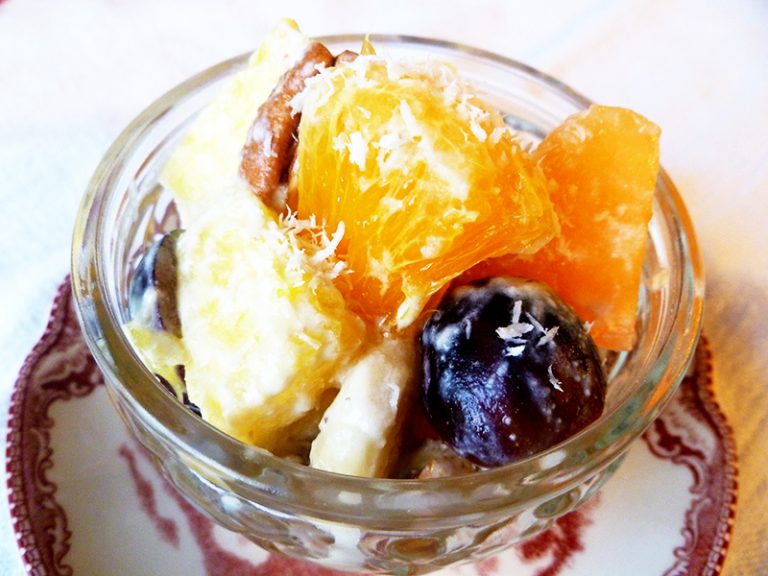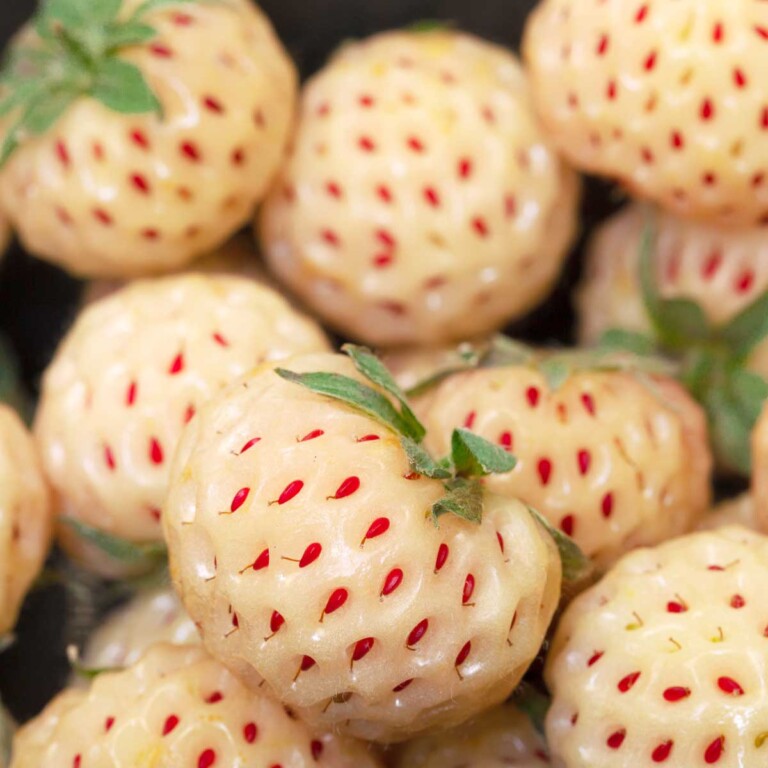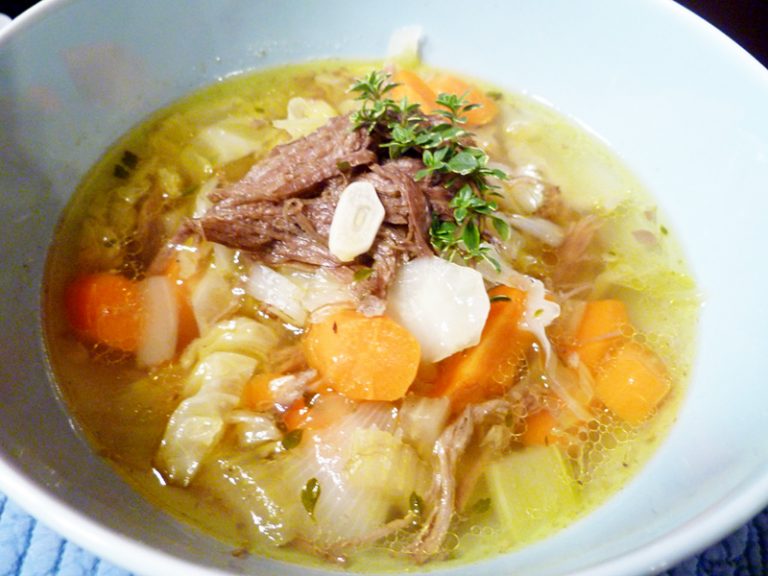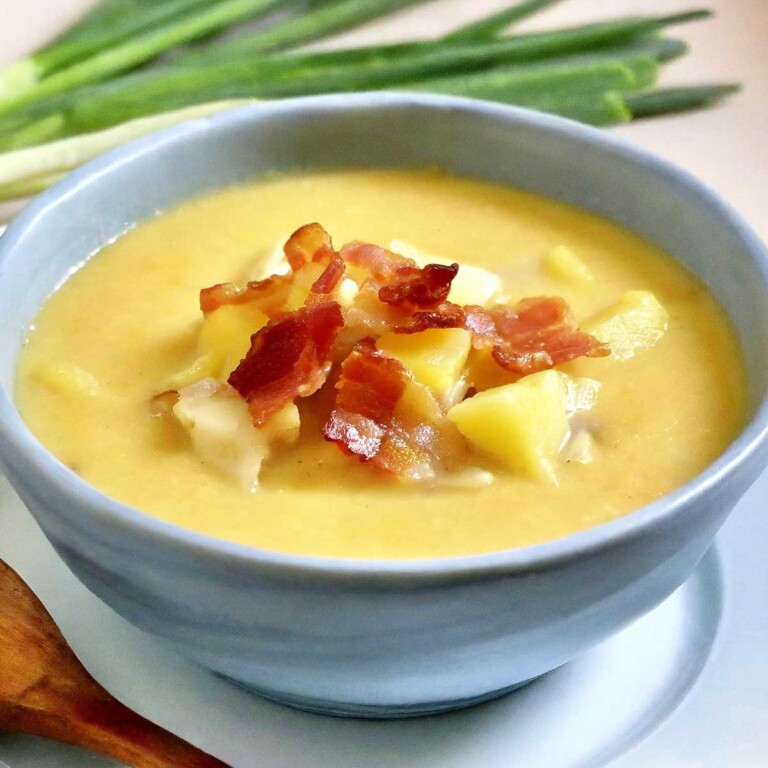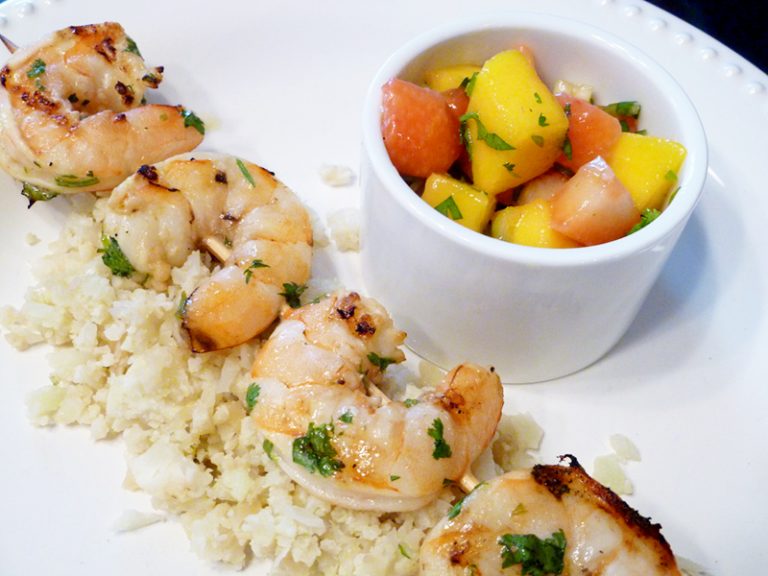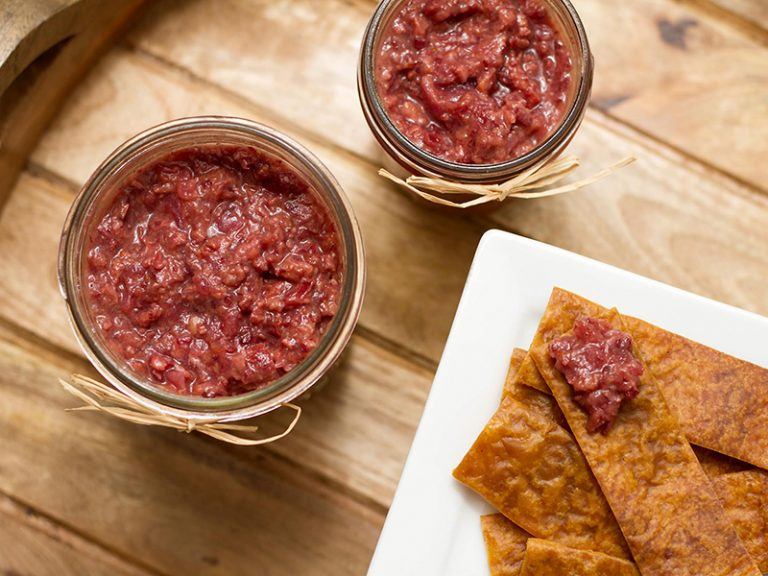Granulated Garlic Vs Other Types (Plus Garlic Granules Recipe)
This post may contain affiliate links. If you make purchase after clicking a link, I may receive a commission at no extra cost to you.
Last Updated on November 6, 2023
No matter how you use garlic, it’s a great ingredient for most any savory dish. Whether it’s granulated garlic, fresh garlic, garlic powder, or garlic salt, there are various ways you can cook with it.
Let’s explore the various uses for granulated garlic compared to garlic powder and other types of garlic. We’ll also show you how to make your own garlic granules with our super-easy recipe!

Granulated Garlic
I love all types of garlic products! When I learned about the health benefits of fermented garlic, and fire cider, I jumped on those bandwagons too. The quercetin in garlic is a great incentive to start eating more of it.
Granulated garlic is a staple in most every pantry. It’s a convenient way to always have garlic on-hand for any recipe.
Would you like to learn how to make your OWN garlic granules? We’ve got a simple granuated garlic recipe with how-to steps so you can make your own granulated garlic in bulk!
But first, let’s take a look at what granulated garlic is and compare it to garlic powder, fresh garlic, minced garlic, and even garlic salt. We’ll even go over how to convert different types of garlic for any recipe.
What is Granulated Garlic?
Granulated garlic is made by dehydrating fresh garlic cloves and then grinding them into small garlic granules. This process helps preserve the natural flavors and aromas of the garlic while extending its shelf-life. Granulated garlic has a coarse texture, making it easy to sprinkle or measure accurately when cooking.
How to Use Granulated Garlic
Here are some of the best ways to use granulated garlic:
- Seasoning: Sprinkle granulated garlic on meat, poultry, fish, or vegetables before cooking to add a delicious garlicky taste.
- Marinades and rubs: Mix granulated garlic with other herbs and spices to create flavorful marinades for meats or as part of dry rubs for grilling.
- Sauces and dressings: Incorporate granulated garlic into sauces, salad dressings, dips, or spreads.
- Soups and stews: Add a pinch or two of granulated garlic to soups, stews, or broths for added depth of flavor.
- Breading and coating: Combine granulated garlic with paleo breadcrumbs or cassava flour when breading meats or vegetables.
- Roasting vegetables: Toss your favorite veggies in olive oil and sprinkle them generously with granulated garlic before roasting them in the oven – it adds amazing flavor!
You might also enjoy: Air Fryer Roasted Garlic
Advantages of Granulated Garlic
- Unlike fresh garlic cloves, granulated garlic does not require peeling or mincing.
- Granulated garlic has a longer shelf life compared to fresh garlic.
- Additionally, using granulated garlic ensures consistent, great flavor throughout your dish. The fine texture of granules allows it to distribute evenly when added to recipes.
- Granulated garlic offers milder and slightly sweeter flavors compared to raw minced or chopped garlic.

How Long Does Granulated Garlic Last?
If stored correctly, granulated garlic can maintain its flavor for up to one year (or even longer!). However, over time the intensity of the flavor may decrease slightly.
To keep your granulated garlic fresh and full of flavor, store it in an airtight container in a cool, dry place away from direct sunlight. This will help prevent moisture and humidity from affecting its quality.
Granulated Garlic Vs Fresh Garlic
- Flavor: Fresh garlic has a strong, pungent flavor that adds depth and intensity to dishes. On the other hand, granulated garlic provides a milder flavor compared to fresh garlic. The drying process reduces some of the pungency but retains the characteristic garlicky taste.
- Convenience: Granulated garlic offers convenience as it comes pre-ground into fine particles, making it easy to measure and incorporate into recipes without any preparation needed. Fresh garlic requires peeling, chopping or mincing before use which can be time-consuming.
- Shelf life: Due to its dry nature, granulated garlic has a longer shelf life than fresh garlic, which tends to spoil relatively quickly if not stored properly. Properly sealed containers of granulated garlic can last up to several years when stored in cool and dark conditions.
- Texture: Granulated garlic has a powdery texture whereas fresh minced or chopped cloves have more substance with their crunchy texture intact.
Granulated Garlic Vs Minced Garlic
- Flavor: Due to its fine texture, granulated garlic tends to have a milder flavor than minced garlic. Since minced garlic is made from freshly chopped cloves, it has stronger and more intense flavors. The smaller pieces release oils faster, providing a bold garlic taste.
- Convenience: Granulated garlic is highly convenient as it can be easily measured using spoons or shakers without the need for chopping or peeling. While not as instantly accessible as granulated garlic, pre-minced garlic still saves time compared to peeling and mincing whole cloves.
- Shelf Life: Thanks to its dehydrated form with minimal moisture content; granulated garlic has a much longer shelf-life than minced garlic.
- Cooking: Because of its powdered form, granulated garlic disperses easily throughout dishes during cooking. It works well when you want an even distribution of mild garlicky flavor without distinct chunks. With its chunkier texture, minced garlic adds both flavor and visible bits to your recipes.
Homemade Garlic Granules
When you make your own dried garlic, the size of the granules can vary from a sand-like consistency to a much larger size, depending on how you pulverize it in the food processor.
You might elso enjoy learning how to make dehydrated jalapenos.
What is Garlic Powder?
Garlic powder is made from dehydrated garlic cloves but goes through an additional step where the dried cloves are ground into a fine powder consistency. The finer texture makes it dissolve quickly in liquids or stick better to dry surfaces like meat rubs or batters.
How to Use Garlic Powder
- Seasoning: Sprinkle garlic powder over roasted root vegetables, grilled meats, or even popcorn for an instant burst of flavor.
- Marinades and Rubs: Mix garlic powder with other spices, herbs, oil, and different types of vinegar to create delicious marinades. You can also combine it with salt and pepper as a dry rub for meat before grilling or roasting.
- Sauces and Dressings: Add a pinch of garlic powder to your homemade sauces to give them extra flavor. It works well in salad dressings too!
- Soups and Stews: Enhance the taste of soups and stews by stirring in some garlic powder during the cooking process.
- Breading and Coating: Combine garlic powder with gluten-free breading for meat or vegetables.
Advantages of Garlic Powder
- Garlic powder is incredibly convenient and easy to use. With garlic powder, you don’t have to worry about peeling or chopping cloves of garlic.
- It has a longer shelf life compared to fresh garlic. It can be stored for months without losing its flavor or aroma.
- Using garlic powder allows for more control over the intensity of the flavor of garlic. You can easily adjust the amount based on your personal preference without overpowering a dish with too much raw garlic.
- Some people find that they experience less digestive discomfort when using garlic powder instead of fresh cloves. This may be due to certain compounds being broken down during the drying process.

How Long Does Garlic Powder Last?
Garlic powder typically has a shelf life of about one to three years. However, the flavor and potency may start to diminish after the first year.
Granulated Garlic Vs Garlic Powder
The main difference between garlic that’s granulated and garlic powder lies in their textures rather than taste. While both offer a concentrated garlicky flavor, some people prefer using a powdered form for recipes where they want the distinct flavor without any visible specks of spice.
Garlic Powder Vs Fresh Garlic
Fresh garlic is often preferred for its strong and bold flavor. When using a fresh garlic clove, you have more control over the intensity of flavor as you can adjust the amount according to your preference.
On the other hand, garlic powder offers convenience and ease of use. Garlic powder provides a milder flavor compared to fresh garlic but still imparts an unmistakable garlicky essence to your food.
If you value a stronger flavor and enjoy working with raw ingredients, then fresh garlic might be your go-to option. However, if you’re short on time or prefer a more subtle taste in certain dishes, then reaching for some quality garlic powder could be just what you need.
It’s worth noting that while both forms of garlic offer similar health benefits due to their active compound called allicin, some studies suggest that freshly crushed or chopped raw cloves may retain more medicinal properties than powdered versions.
Garlic Powder Vs Minced Garlic
Both forms have their specific uses in cooking. Garlic powder works well in dry rubs, marinades, spice blends, soups, sauces, and baked goods where even distribution is desired without altering the texture significantly.
Minced garlic shines when used in sautés, stir-fries, pasta dishes, bruschetta, or any recipe that benefits from visible pieces of cooked raw-garlic.
In terms of flavor, minced garlic has the same flavor of fresh garlic, it’s just pre-minced for you.

What is Garlic Salt?
Garlic salt is a spice blend that consists of garlic powder and table salt. It offers convenience by combining two common seasonings into one. However, it’s important to note that if you use garlic salt instead of garlic powder, you may want to adjust the salt in your recipe so it’s not too salty.
How to Use Garlic Salt
- Seasoning for meat: Sprinkle garlic salt on chicken, beef, pork, or fish before grilling or baking for added flavor.
- Enhancing vegetables: Toss roasted vegetables with a pinch of garlic salt to elevate their taste and bring out their natural flavors.
- Flavoring sauces and dressings: Incorporate garlic salt into homemade sauces, dressings, or marinades for a nice burst of flavor.
- Enhancing the flavor of soups and stews: Add a dash of garlic salt while simmering soups or stews to enhance their overall taste profile.
- Jazz up popcorn and snacks: Sprinkle some garlic salt over freshly popped popcorn, roasted nuts, or homemade plantain chips for a tasty twist.
Advantages of Garlic Salt
- Convenience: Garlic salt combines the distinct flavors of garlic and salt into one convenient seasoning. This means you don’t have to separately measure and add both ingredients while cooking, saving you time.
- Flavor enhancement: Garlic adds a delicious savory taste to your dishes, while salt enhances the overall flavor.
- Versatility: Garlic salt can be used in various recipes across different cuisines.
- Long shelf life: Unlike fresh garlic cloves that need to be used within a short period before they spoil, garlic salt has a longer shelf life due to its preservation with sodium chloride (salt).
- Consistency: Using garlic salt allows for better control over the amount of seasoning added to your dish compared to fresh minced or powdered garlic alone.
Note: If you prefer using sea salt over table salt, then you’d want to be sure to get a garlic salt that uses sea salt instead of regular table salt.
How Long Does Garlic Salt Last?
Garlic salt can last for a long time if stored properly. As a general rule, it is recommended to use garlic salt within two years of its purchase date. However, the actual shelf life may vary depending on factors such as packaging and storage conditions.
Are Granulated Garlic and Garlic Powder Interchangeable?
While these two forms of garlic share similarities, they are not always interchangeable in recipes due to their different textures and intensities of flavor.
Basically, if you’re looking for a stronger garlicky taste with added texture, granulated garlic would be the better choice. If you prefer a more subtle garlic flavor that blends seamlessly into your dish, then go for the finer consistency of garlic powder.
Garlic Conversions
- 1 medium-sized clove of garlic = 1/8 teaspoon of garlic powder
- 1 medium-sized clove of garlic = 1/4 teaspoon of granulated garlic
- 1 medium-sized clove of garlic = 1/2 tsp minced garlic
- For every 1/2 teaspoon of powdered garlic required in a recipe, you would need about twice that amount or around 1 teaspoon if using granulated garlic.
Granulated Garlic
Now that you’ve learned all there is to know about the various types of garlic, be it granulated garlic, garlic powder, or garlic salt, are you ready to make your own garlic granules?

What You Need to Make Garlic Granules
All you need to make garlic granules is GARLIC, lots and lots of garlic (preferably organic)! You’ll also need the following:
- food processor
- parchment paper
- baking sheet
- oven

How to Make Granulated Garlic
- Start by peeling and washing the garlic. Pat-dry the cloves with a paper towel. Learn how to quickly peel a lot of garlic at once.
- Put the dried garlic into the food processor and pulse until the garlic has reached your desired texture.
- Set your oven to 170°F or as low of a temperature as possible.
- Spread the garlic on a parchment paper lined cookie sheet. Dry up until they’re ready (should take 4-5 hours). The timing will depend on the size of your garlic and moisture content.
- Let the dried garlic granules cool, crush it into fine pieces and transfer into an airtight glass container or process further into dried garlic powder.
Homemade Granulated Garlic
Ingredients
All you need to make granulated garlic is GARLIC, lots and lots of garlic (preferably organic).
Instructions
How to Make Granulated Garlic
- Start by peeling and washing the garlic. Pat-dry the cloves with a paper towel.
- Put the dried garlic into the food processor and pulse until the garlic has reached your desired texture.
- Set your oven to 170°F or as low of a temperature as possible.
- Spread the garlic on a parchment paper lined cookie sheet. Dry up until they’re ready (should take 4-5 hours). The timing will depend on the size of your garlic and moisture content.
- Let the dried garlic granules cool, crush it into fine pieces and transfer into an airtight glass container or process further into dried garlic powder.



